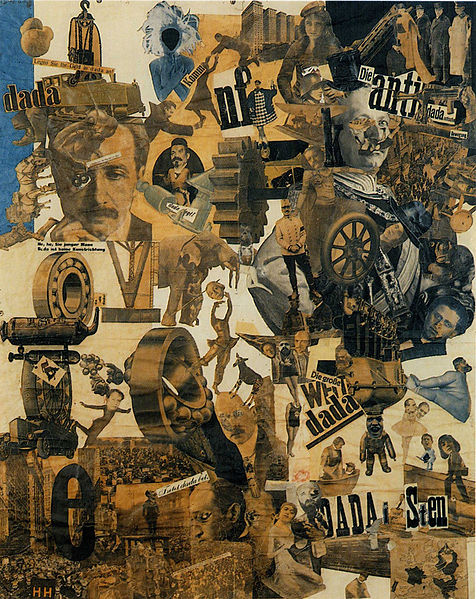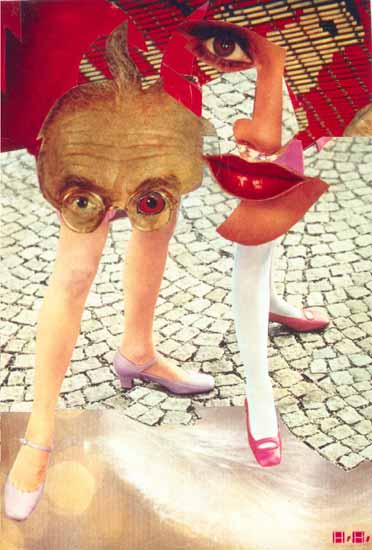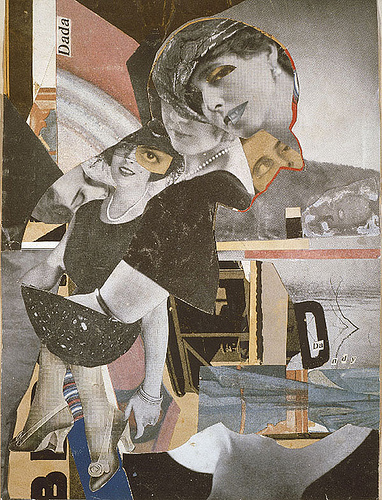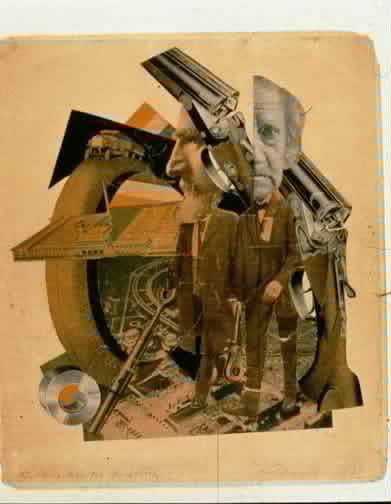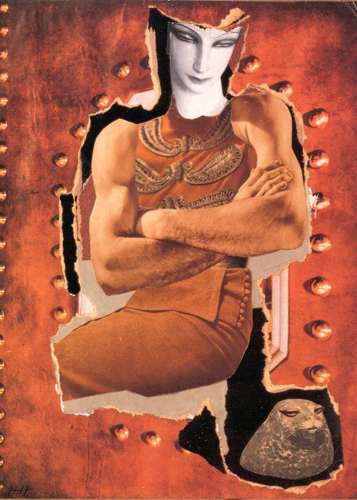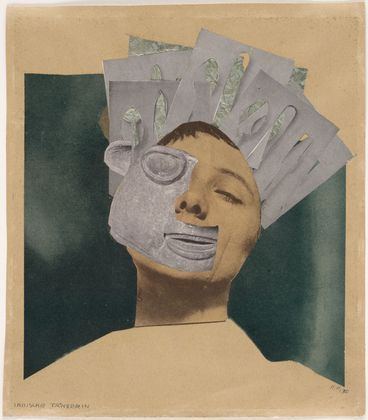<Back to Index>
- Artist Hannah Höch, 1889
PAGE SPONSOR
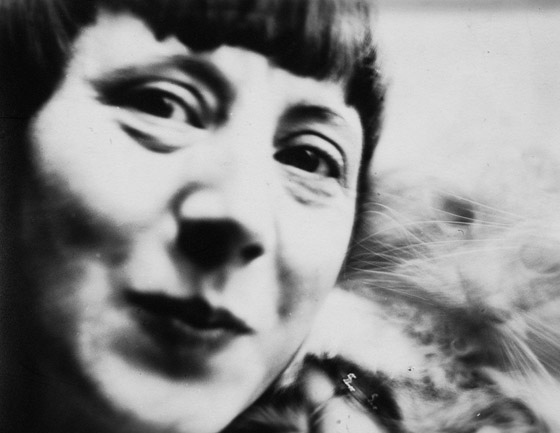
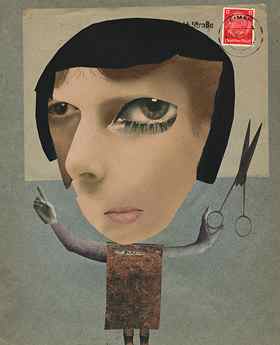
Hannah Höch (November 1, 1889 – May 31, 1978) was a German Dada artist. She is best known for her work of the Weimar period, when she was one of the originators of photomontage.
Hannah Höch was born Anna Therese Johanne Höch in Gotha, Germany. From 1912 to 1914 she studied at the College of Arts and Crafts in Berlin under the guidance of Harold Bergen. She chose the curriculum glass design and graphic arts, rather than fine arts, to please her father. In 1914, at the start of World War I, she left the school to work with the Red Cross. In 1915 she returned to schooling, entering the graphics class of the National Institute of the Museum of Arts and Crafts. Also in 1915, Höch began an influential friendship with Raoul Hausmann, a member of the Berlin Dada movement. Höch's involvement with the Berlin Dadaists began in earnest in 1919. After her schooling, she worked in the handicrafts department for Ullstein Verlag [The Ullstein Press], designing dress and embroidery patterns for Die Dame [The Lady] and Die Praktische Berlinerin [The Practical Berlin Woman]. The influence of this early work and training can be seen in her later work involving references to dress patterns and textiles. From 1926 to 1929 she lived and worked in the Netherlands. Höch made many influential friendships over the years, with Kurt Schwitters and Piet Mondrian among others. Hausmann, along with Höch, was one of the first pioneers of the art form that would come to be known as photomontage.
Höch's personal relationship with Hausmann grew from friendship to romance over time. While this was the first crucial relationship to have an influence on Höch's artistic work, she often reflected upon her relationships in such pieces as Love (1926). After her involvement with Hausmann, she was sexually involved with women and had a relationship from 1926 to 1929 with the Dutch writer and linguist Til Brugman. Hausmann was married to another woman during their involvement, and refused to marry Höch. She supported women's right to reproductive control; she had two abortions during her involvement with Hausmann, who was physically abusive. Höch and Hausmann separated in 1922, at which point Höch was well on her way to becoming an artist in her own right, independent of her involvement with Hausmann. Incidentally, it was during Höch's relationship with Hausmann that both artists began to work more thoroughly with collage, extending the art form established by cubistic painters. Höch collaborated with Hausmann, on the piece Dada - Cordial in 1920., and even so Höch was still considered Hausmann's lover and not his equal.
While the Dadaists "paid lip service to women's emancipation" they were clearly reluctant to include a woman among their ranks. Hans Richter described Höch's contribution to the Dada movement as the "sandwiches, beer and coffee she managed somehow to conjure up despite the shortage of money." Raoul Hausmann even suggested that Höch get a job to support him financially. Höch was the lone woman among the Berlin Dada group, although Sophie Täuber, Beatrice Wood and Baroness Else von Freytag - Loringhoven were also important (if overlooked) Dada figures. Höch references the hypocrisy of the Berlin Dada group and German society as a whole in her photomontage, Da-Dandy.
Höch's work at Verlang working with magazines targeted to women made her acutely aware of the difference between women in media and reality, even as the workplace provided her with many of the images that served as raw material for her own work. Marriage did not escape her criticism — she depicted brides as mannequins and children, reflecting the idea that women are not seen as complete people and have little control over their lives. Höch saw herself as part of the women's movement in the 1920s, as shown in her depiction of herself in Schnitt mit dem Küchenmesser DADA durch die letzte weimarer Bierbauchkulturepoche Deutschlands (1919 – 20). Her pieces also commonly combine male and female into one being. During the era of the Weimar Republic, "mannish women were both celebrated and castigated for breaking down traditional gender roles." Her androgynous characters may also have been related to her bisexuality, and attraction to masculinity in women. That is, having the shape of woman (even if altered in Höch's work) with the society embraced attitude and outlook of stereo - typed masculinity.
Höch spent the years of the Third Reich in Berlin, Germany, trying to remain quiet and in the background. She lived in Berlin Heiligensee a remote area in the outskirts of Berlin hiding in a little Gardenhouse. She married the much younger businessman and pianist Kurt Matthies in 1938 and divorced him in 1944.Though her work was not acclaimed after the war as it had been before the rise of the Third Reich, she continued to produce her photomontages and exhibit them internationally until her death in 1978, in Berlin. Her House and Garden can be visited at the annual Day of the Memorial. (Tag des offenen Denkmals)
Höch was a pioneer of the art form that became known as photomontage. Many of her pieces sardonically critique the mass culture beauty industry, at the time gaining significant momentum in mass media through the rise of fashion and advertising photography. Her works from 1926 to 1935 often depicted same sex couples, and women were once again a central theme in her work from 1963 to 1973. Höch also made strong statements on racial discrimination. Her most famous piece is Schnitt mit dem Küchenmesser DADA durch die letzte weimarer Bierbauchkulturepoche Deutschlands ("Cut with the Dada Kitchen Knife through the Last Weimar Beer-Belly Cultural Epoch in Germany"), a critique of Weimar Germany in 1919. This piece combines images from newspapers of the time re-created to make a new statement about life and art in the Dada movement.
